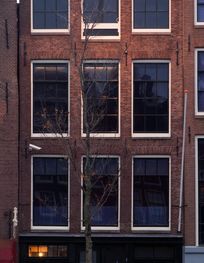
Amsterdam: The Venice of the North
Discover Amsterdam's charming canals, historic architecture, vibrant culture, and diverse nightlife in the heart of the Netherlands.
Amsterdam, the capital of the Netherlands, is a city of charming canals, historic buildings, and vibrant culture. Known for its artistic heritage, it is home to the Van Gogh Museum, the Rijksmuseum, and the Anne Frank House. The picturesque canal system, dating back to the 17th century, offers a unique way to explore the city by boat, bike, or on foot. Amsterdam's narrow houses with gabled facades, legacies of the city's Golden Age, line the waterways and create a fairy-tale ambiance. The city is also famous for its liberal attitudes, with a lively and diverse nightlife, coffee shops, and the Red Light District. Yet, it maintains a cozy and welcoming atmosphere that makes visitors feel at home. The city's cultural scene is bustling with events, from world-class concerts at the Concertgebouw to avant-garde performances at local theaters. The bustling Albert Cuyp Market is a must-visit for a taste of local life, while Vondelpark offers a peaceful retreat for a leisurely stroll or picnic. Whether you're a history buff, an art lover, or simply looking to soak in the unique atmosphere, Amsterdam has something to offer everyone.
Local tips in Amsterdam
- Rent a bike to explore the city like a local and enjoy the extensive network of cycling paths.
- Purchase an I Amsterdam City Card for free entry to museums and attractions, as well as unlimited public transportation.
- Visit the Anne Frank House early in the day or book tickets online in advance to avoid long lines.
- Try traditional Dutch snacks like stroopwafels and herring from a street market or local vendor.
- Take a canal cruise at night to see the city illuminated and enjoy a different perspective of Amsterdam's beauty.
Neighbourhoods in Amsterdam
Amsterdam: The Venice of the North
Amsterdam, the capital of the Netherlands, is a city of charming canals, historic buildings, and vibrant culture. Known for its artistic heritage, it is home to the Van Gogh Museum, the Rijksmuseum, and the Anne Frank House. The picturesque canal system, dating back to the 17th century, offers a unique way to explore the city by boat, bike, or on foot. Amsterdam's narrow houses with gabled facades, legacies of the city's Golden Age, line the waterways and create a fairy-tale ambiance. The city is also famous for its liberal attitudes, with a lively and diverse nightlife, coffee shops, and the Red Light District. Yet, it maintains a cozy and welcoming atmosphere that makes visitors feel at home. The city's cultural scene is bustling with events, from world-class concerts at the Concertgebouw to avant-garde performances at local theaters. The bustling Albert Cuyp Market is a must-visit for a taste of local life, while Vondelpark offers a peaceful retreat for a leisurely stroll or picnic. Whether you're a history buff, an art lover, or simply looking to soak in the unique atmosphere, Amsterdam has something to offer everyone.
When is the best time to go to Amsterdam?
Iconic landmarks you can’t miss
Rijksmuseum
Explore the rich heritage of the Netherlands at the Rijksmuseum, home to masterpieces of Dutch art, stunning architecture, and a captivating cultural experience.
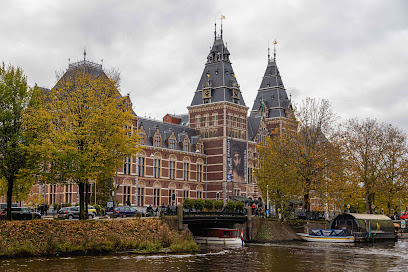
Anne Frank House
Explore the Anne Frank House in Amsterdam, a poignant museum honoring the legacy of a young girl whose diary changed the world.
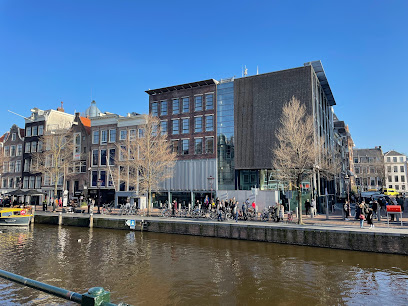
Vondelpark
Explore Vondelpark, Amsterdam's premier park, where nature meets culture in a vibrant urban setting perfect for relaxation and recreation.
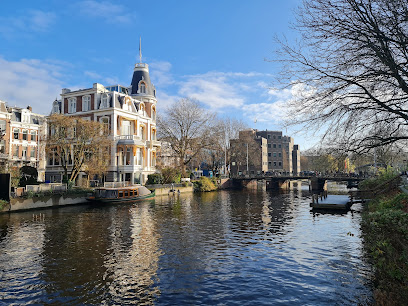
Dam Square
Experience the vibrant essence of Amsterdam at Dam Square, where history, culture, and modern life beautifully intertwine.
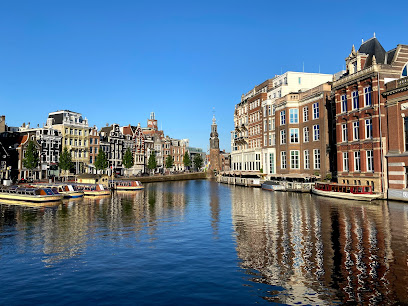
ARTIS
Explore ARTIS in Amsterdam: A captivating zoo and aquarium offering a unique glimpse into the animal kingdom and marine life.
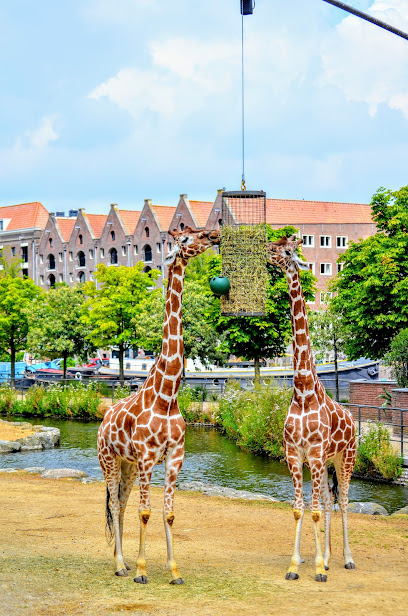
Madame Tussauds Amsterdam
Discover the world of fame and fun at Madame Tussauds Amsterdam, where lifelike wax figures bring your favorite stars to life.
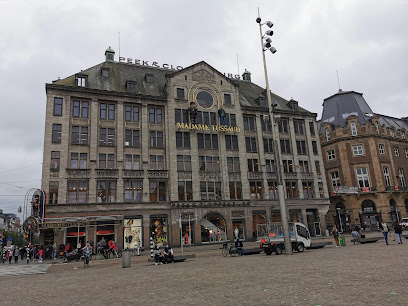
Royal Palace Amsterdam
Explore the Royal Palace Amsterdam, a stunning historical landmark that offers a glimpse into the opulent world of Dutch royalty and rich cultural heritage.
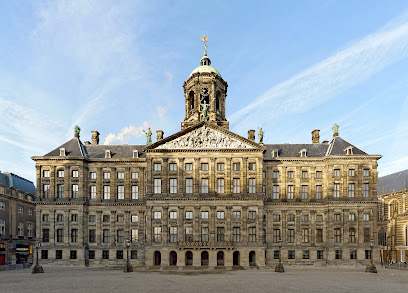
BODY WORLDS Amsterdam
Discover the breathtaking intricacies of the human body at BODY WORLDS Amsterdam, an unforgettable journey through anatomy and health.
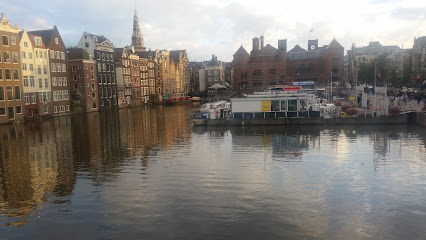
Dungeon Amsterdam
Explore the chilling history of the Netherlands at the Amsterdam Dungeon, where fear meets entertainment in an unforgettable experience.
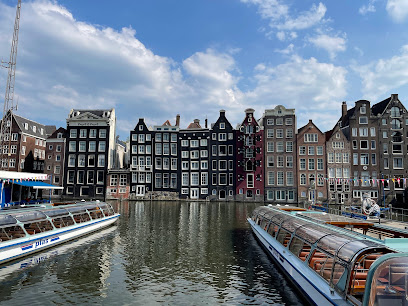
Maritime Museum
Discover the rich maritime history of the Netherlands at Amsterdam's Maritime Museum, featuring ship replicas, interactive exhibits, and engaging displays.
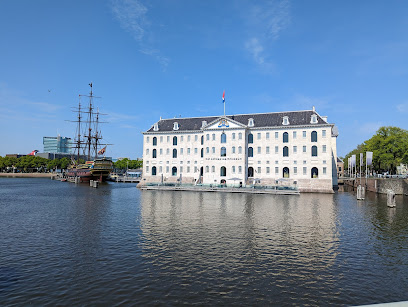
Hortus Botanicus
Explore the rich diversity of plant life at Hortus Botanicus Amsterdam, a historic botanical garden that offers tranquility and beauty in the heart of the city.
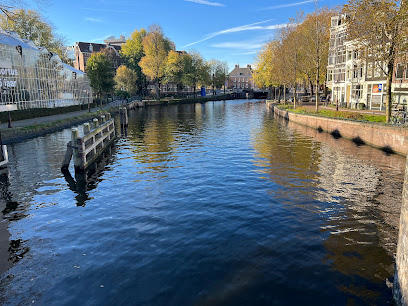
Oude Kerk Amsterdam
Explore Oude Kerk, Amsterdam's oldest church, a stunning blend of history and contemporary art in the heart of the city.
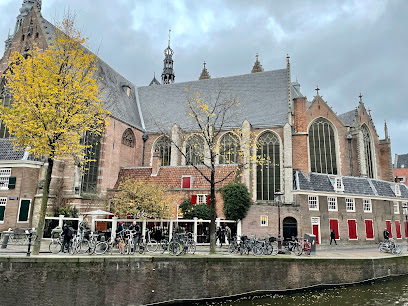
This is Holland
Experience the breathtaking beauty of the Netherlands from above at This is Holland, an unforgettable 5D flight adventure.
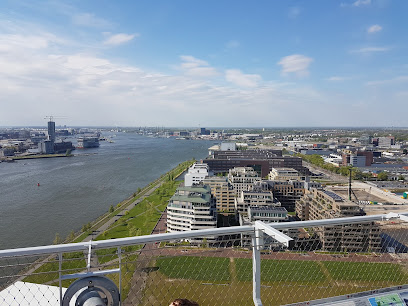
H'ART Museum (Hermitage Amsterdam)
Explore the artistic heritage of Amsterdam at H'ART Museum, a vibrant hub for art lovers and culture seekers.
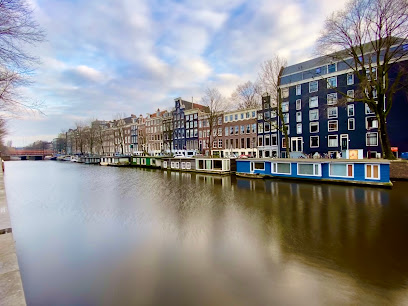
Amsterdam Museum
Discover the vibrant history and art of Amsterdam at the Amsterdam Museum, where stories of the past come alive through engaging exhibits and local artifacts.

Unmissable attractions to see
Rijksmuseum
Explore the Rijksmuseum: A Masterpiece of Dutch Art and History in Amsterdam's Cultural Heart.
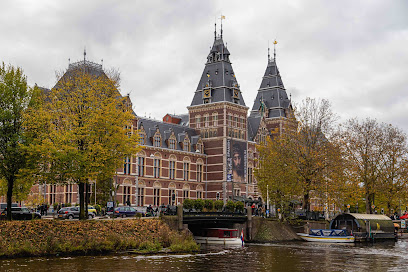
Van Gogh Museum
Discover the life and masterpieces of Vincent van Gogh at the Van Gogh Museum, a cultural gem in Amsterdam's Museumplein.
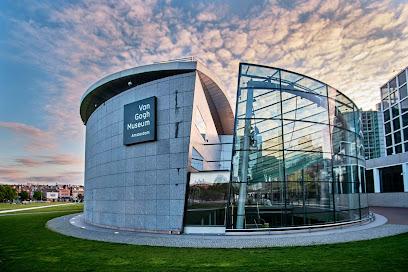
Anne Frank House
Explore the poignant legacy of Anne Frank at the historic Anne Frank House, a touching tribute to hope and resilience amidst the horrors of war.
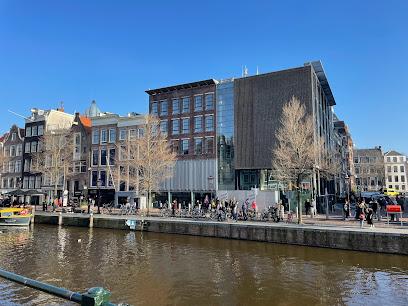
Keukenhof
Discover the breathtaking beauty of Keukenhof, the world's largest flower garden, showcasing millions of tulips in stunning displays each spring.
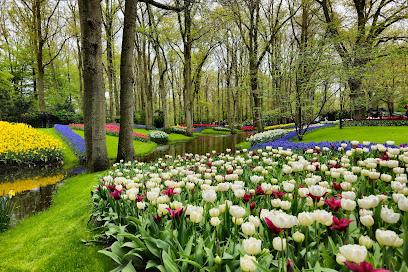
Vondelpark
Discover the serene beauty and cultural vibrancy of Vondelpark, Amsterdam's beloved green oasis perfect for relaxation and exploration.
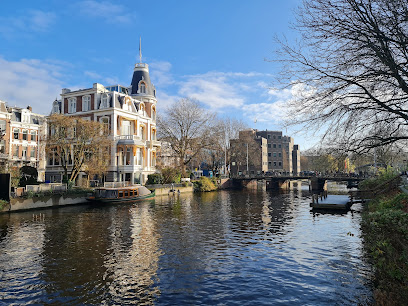
Dam Square
Explore Dam Square, the vibrant heart of Amsterdam, where history meets culture amidst stunning architecture and lively atmosphere.
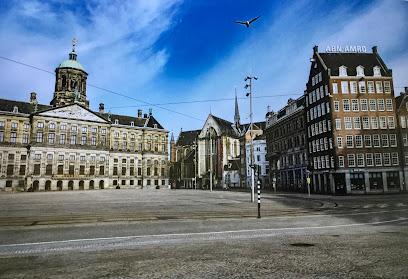
Johan Cruyff Arena
Discover the legendary Johan Cruyff Arena in Amsterdam - home to Ajax and a hub of thrilling sports and entertainment experiences.
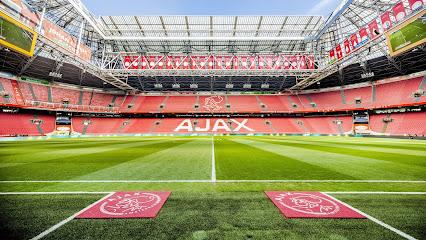
ARTIS
Experience the magic of nature at ARTIS, Amsterdam's historic zoo and aquarium, where wildlife conservation meets captivating exhibits.
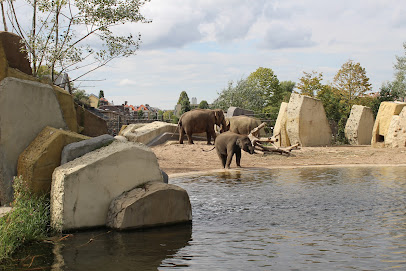
Madame Tussauds Amsterdam
Discover the magic of fame at Madame Tussauds Amsterdam, where you can meet your favorite celebrities and historical icons in stunning wax form.

A'DAM Lookout
Experience breathtaking views and thrilling adventures at A'DAM Lookout, Amsterdam's premier observation deck and entertainment hub.
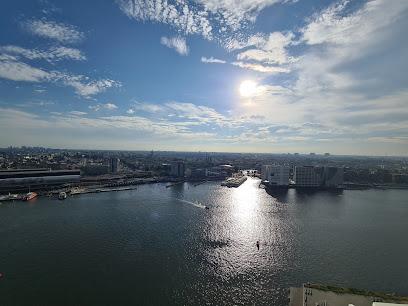
Royal Palace Amsterdam
Discover the Royal Palace Amsterdam: a stunning blend of history, art, and Dutch royal heritage in the heart of the city.
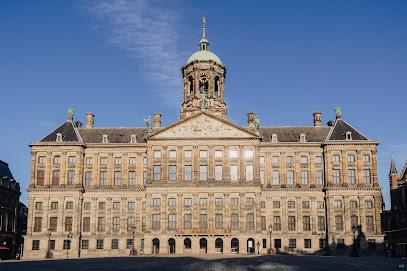
Moco Museum
Discover the vibrant world of modern art at the Moco Museum in Amsterdam, showcasing iconic works and engaging exhibitions that inspire creativity.
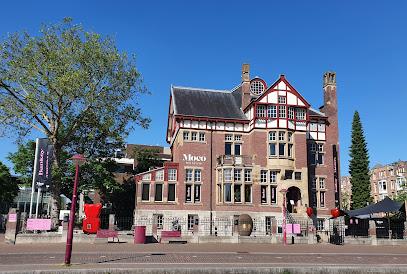
Castle De Haar
Experience the fairy-tale beauty and rich history of Castle De Haar, a stunning gem in Utrecht surrounded by lush gardens and captivating architecture.
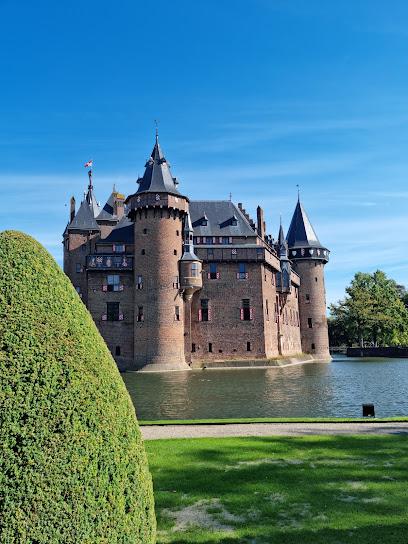
Free walking tour Amsterdam
Explore the beauty of Amsterdam with a free walking tour led by local guides, uncovering the city's history, culture, and hidden treasures.
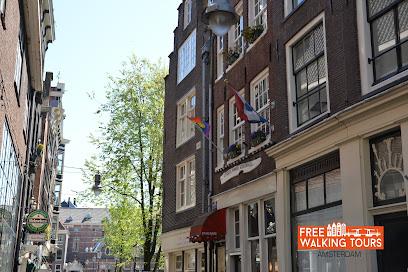
Red Light Secrets Museum
Discover the intriguing history and culture of sex work at the Red Light Secrets Museum in Amsterdam, a unique and educational tourist attraction.
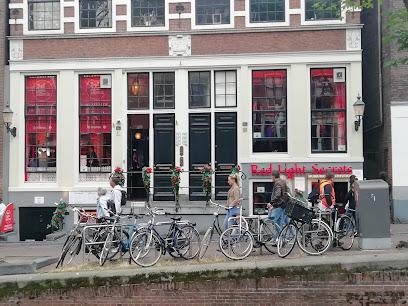
Essential places to dine
The Pantry
Discover the essence of Dutch gastronomy at The Pantry - where tradition meets taste in the heart of Amsterdam.
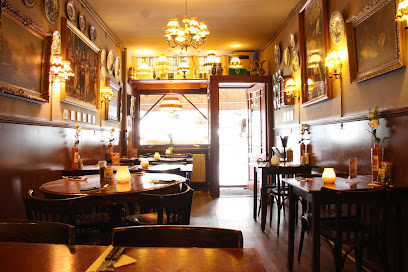
Moeders
Discover the heart of Dutch culinary traditions at Moeders—where every meal tells a story.
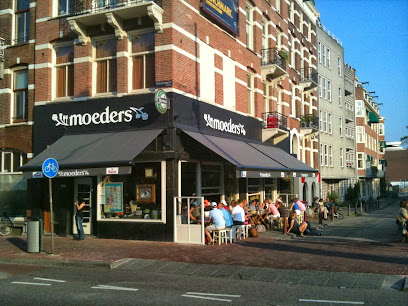
Restaurant Olijfje
Discover exquisite Mediterranean cuisine at Restaurant Olijfje in Amsterdam – where flavor meets tradition in every dish.

Café restaurant van Kerkwijk
Experience authentic Dutch and continental cuisine at Café Restaurant van Kerkwijk, nestled in the heart of Amsterdam's vibrant city center.
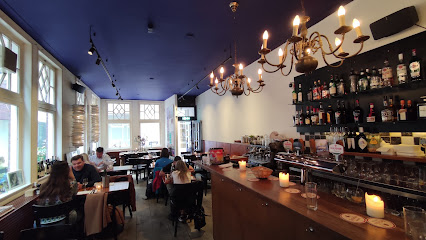
De Kas
Discover De Kas: A unique restaurant in Amsterdam where fresh ingredients meet innovative cuisine in a stunning greenhouse setting.
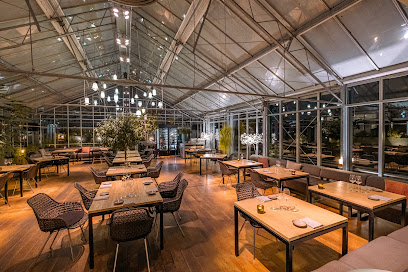
Black and Blue
Experience modern European dining at its finest with exquisite steaks and delightful dishes in the heart of Amsterdam.
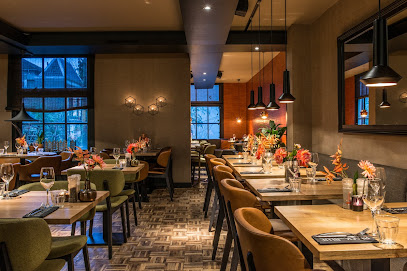
De Plantage
Discover De Plantage: A culinary gem in Amsterdam offering exquisite dishes in a stunning garden setting.
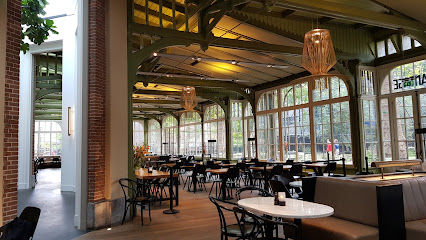
Humphrey's
Experience culinary excellence at Humphrey's Amsterdam – where local flavors meet international flair in a vibrant dining atmosphere.
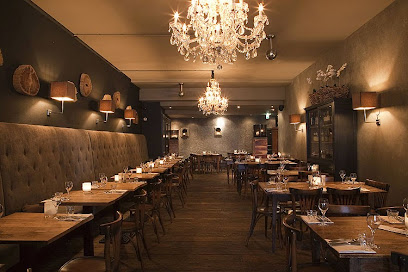
The Cottage
Discover The Cottage in Amsterdam-Oost: where cozy ambiance meets exquisite gastropub cuisine.

Restaurant Red
Experience exquisite steak and Mediterranean cuisine at Restaurant Red in Amsterdam's charming canalside setting.
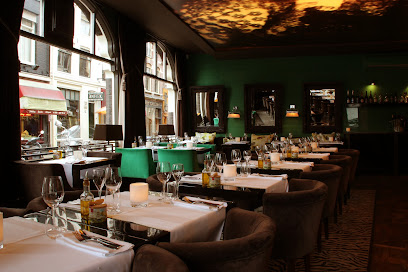
Restaurant De Belhamel
Experience exquisite French cuisine at Restaurant De Belhamel in Amsterdam's picturesque canals – where charm meets culinary excellence.
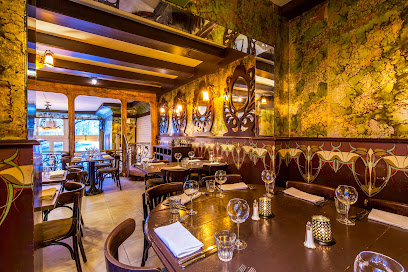
d'Vijff Vlieghen
Discover d'Vijff Vlieghen: A fine dining experience in Amsterdam where exquisite European cuisine meets elegant ambiance.
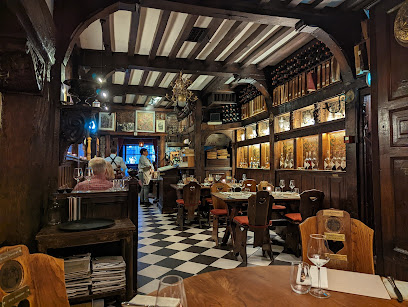
Secret Garden
Experience the magic of Secret Garden in Amsterdam - where exquisite cuisine meets enchanting surroundings for an unforgettable dining adventure.
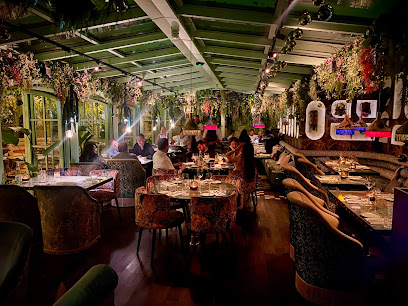
MOON
Experience Modern European cuisine with stunning panoramic views at MOON, Amsterdam's premier dining destination.
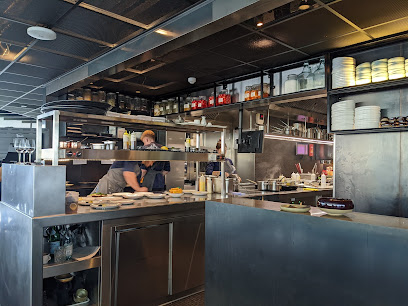
Bistrot Neuf
Experience authentic French cuisine at Bistrot Neuf in Amsterdam-Centrum, where every dish tells a story.
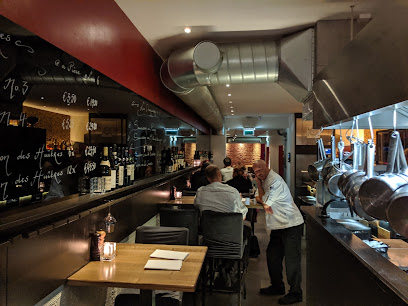
Markets, malls and hidden boutiques
de Bijenkorf Amsterdam
Explore De Bijenkorf Amsterdam, the ultimate luxury shopping destination, offering a wide selection of high-end brands and gourmet dining in the city's vibrant heart.
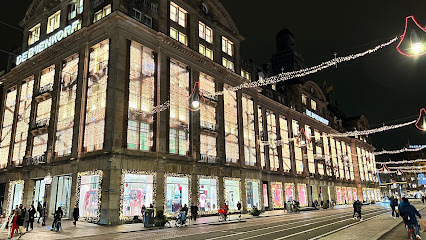
Dam Square Souvenirs
Explore Dam Square Souvenirs - your ultimate destination for authentic Dutch gifts and memorabilia in the heart of Amsterdam.
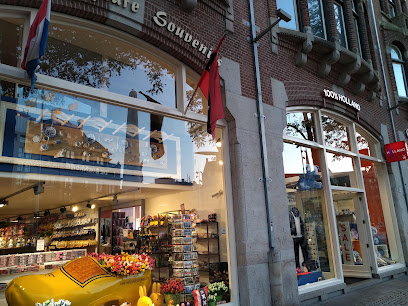
Urban Outfitters
Discover eclectic fashion and unique gifts at Urban Outfitters in Amsterdam, where modern style meets cultural flair.
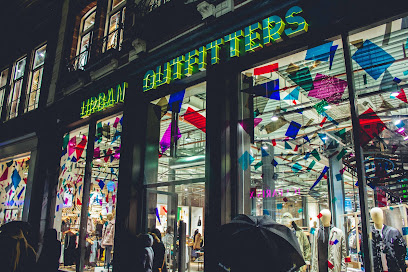
Amsterdam Duck Store
Explore the whimsical Amsterdam Duck Store for an unforgettable shopping experience filled with funky rubber ducks and delightful souvenirs.
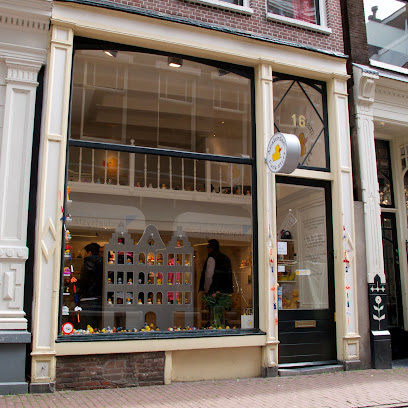
Amsterdam Experience
Explore the Amsterdam Experience, a vibrant souvenir store in the heart of the city, offering unique gifts and mementos to cherish your trip.
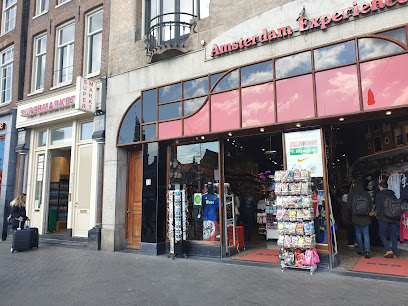
By Popular Demand - Things You Want Giftshop
Discover unique gifts and souvenirs at By Popular Demand, the perfect stop for every traveler in the heart of Amsterdam.

Asian Spirit
Explore the whimsical Asian Spirit gift shop in Amsterdam, offering unique souvenirs, stylish clothing, and a fairytale shopping experience.
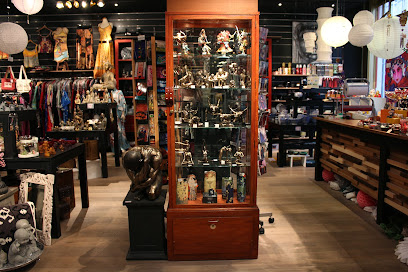
IT'S A PRESENT!
Explore IT'S A PRESENT! in Amsterdam for unique gifts, charming home goods, and heartfelt greeting cards that capture the essence of thoughtful gifting.
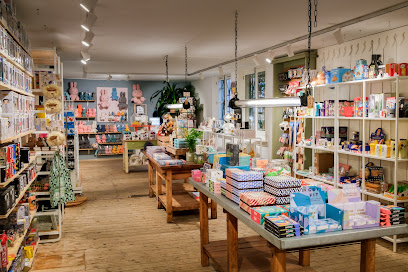
the Otherist
Explore The Otherist, Amsterdam's unique gift shop featuring antiques, jewelry, and eclectic treasures that capture the spirit of the city.
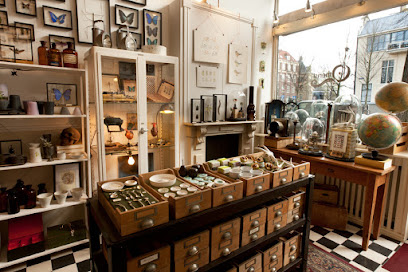
IT’S A PRESENT!
Explore IT’S A PRESENT! in Amsterdam for handcrafted gifts and unique home goods that celebrate the city's culture and charm.
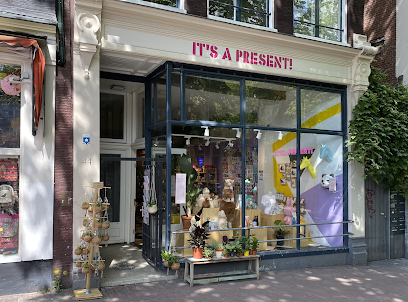
Rumors Vintage & Design
Uncover one-of-a-kind vintage fashion finds at Rumors Vintage & Design in the heart of Amsterdam, where every piece has a story.
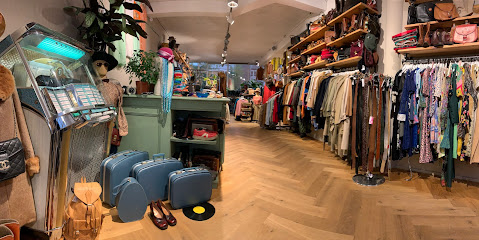
Penny Lane Vintage Boutique
Explore Penny Lane Vintage Boutique in Amsterdam for a unique collection of vintage clothing and accessories that celebrate sustainable fashion and individuality.
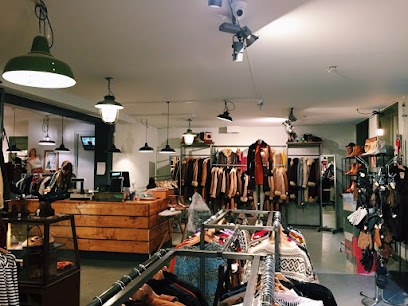
Drake's Luxury Boutique
Explore Amsterdam's high-end fashion scene at Drake's Luxury Boutique, where luxury meets unique style in an unforgettable shopping experience.

Spiegel Amsterdam 100% Dutch
Discover authentic Dutch souvenirs, fashion accessories, and home goods at Spiegel Amsterdam, the ultimate gift shop for travelers.
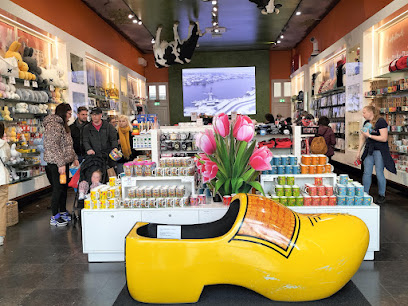
Concrete Matter
Explore Concrete Matter in Amsterdam for unique vintage menswear and fashion accessories, perfect souvenirs that embody the city's artistic spirit.
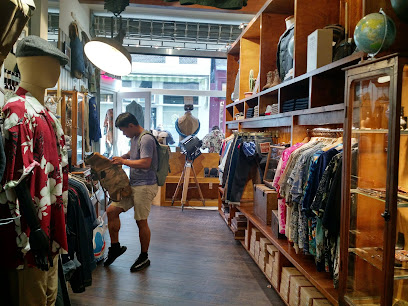
Essential bars & hidden hideouts
Bar Bukowski
Experience the vibrant atmosphere of Bar Bukowski in Amsterdam-Oost, where unique cocktails and a delicious brunch menu await.

Tales & Spirits
Discover the essence of Amsterdam nightlife at Tales & Spirits, where innovative cocktails meet a vibrant atmosphere in the heart of the city.

Door 74
Discover the allure of Door 74, Amsterdam's premier cocktail bar, where innovative drinks meet a cozy, speakeasy atmosphere for an unforgettable night out.

Flying Dutchmen Cocktails
Discover the essence of Amsterdam nightlife at Flying Dutchmen Cocktails, where creativity meets flavor in every glass.

Drink n Sink - Cafe Bar Amsterdam
Experience the lively atmosphere of Drink n Sink, a trendy cafe bar in Amsterdam offering great drinks and a vibrant nightlife.

Rosalia's Menagerie
Discover Rosalia's Menagerie, Amsterdam's premier cocktail bar, where innovative drinks and vibrant atmosphere await in the heart of the city.

Hiding in Plain Sight
Experience the allure of Amsterdam's nightlife at 'Hiding in Plain Sight', where exceptional cocktails meet an intimate atmosphere.

The Black Tiger Bar Amsterdam
Experience the vibrant atmosphere of The Black Tiger Bar in Amsterdam, where unique cocktails and lively music create unforgettable nightlife.

Bar Mokum
Discover Bar Mokum, an enchanting cocktail bar in Amsterdam-Zuid, offering delightful drinks and a cozy speakeasy atmosphere for every occasion.

Bar Oldenhof
Experience the charm of Bar Oldenhof in Amsterdam, where exquisite cocktails and a cozy atmosphere combine for an unforgettable night out.

Pulitzer's Bar
Experience the elegance of Pulitzer's Bar, a cocktail haven in Amsterdam, offering exquisite drinks and a refined atmosphere along the beautiful canals.

Three Little Bottles
Experience the unique charm of Three Little Bottles, a cozy pub in Amsterdam offering exceptional drinks and a taste of local culture.

Bar Jones
Discover the vibrant atmosphere of Bar Jones in Amsterdam, where expertly crafted cocktails and a lively ambiance await you.

Law & Order Cocktail Bar
Discover Law & Order Cocktail Bar in Amsterdam, where unique cocktails and a vibrant atmosphere create unforgettable memories.

Freddy's Bar
Discover the vibrant nightlife at Freddy's Bar, Amsterdam's premier cocktail destination, perfect for a memorable night out with friends.

Travel experiences inspired by this city
Explore more travel diariesLocal Phrases
-
- HelloHallo
[hah-loh] - GoodbyeTot ziens
[toht zeens] - YesJa
[yah] - NoNee
[nay] - Please/You're welcomeAlsjeblieft
[ahls-yuh-bleeft] - Thank youDank je
[dahnk yuh] - Excuse me/SorrySorry
[soh-ree] - How are you?Hoe gaat het met je?
[hoo gaht het met yuh] - Fine. And you?Goed. En met jou?
[khoot. en met yow] - Do you speak English?Spreek je Engels?
[sprayk yuh eng-els] - I don't understandIk begrijp het niet
[ik buh-grayp het neet]
- HelloHallo
-
- I'd like to see the menu, pleaseIk wil graag de menukaart zien, alsjeblieft
[ik wil khrahg duh menu-kahrt seen, ahls-yuh-bleeft] - I don't eat meatIk eet geen vlees
[ik ayt khayn flays] - Cheers!Proost!
[prohst] - I would like to pay, pleaseIk wil graag betalen, alsjeblieft
[ik wil khrahg buh-tah-luhn, ahls-yuh-bleeft]
- I'd like to see the menu, pleaseIk wil graag de menukaart zien, alsjeblieft
-
- Help!Help!
[help] - Go away!Ga weg!
[gah vekh] - Call the Police!Bel de politie!
[bel duh poh-lee-see] - Call a doctor!Bel een dokter!
[bel ayn dohk-tur] - I'm lostIk ben verdwaald
[ik ben vuhr-dwahlt] - I'm illIk ben ziek
[ik ben zik]
- Help!Help!
-
- I'd like to buy...Ik wil graag kopen...
[ik wil khrahg koh-puhn] - I'm just lookingIk ben alleen aan het kijken
[ik ben ayl-uhn ahn het kee-kuhn] - How much is it?Hoeveel kost het?
[hoo-vale kost het] - That's too expensiveDat is te duur
[daht is tuh dur] - Can you lower the price?Kun je de prijs verlagen?
[koon yuh duh prays vur-lah-ghun]
- I'd like to buy...Ik wil graag kopen...
-
- What time is it?Hoe laat is het?
[hoo laht is het] - It's one o'clockHet is een uur
[het is ayn uhr] - Half past (10)Half elf
[hahlf elf] - MorningOchtend
[ohk-tuhnt] - AfternoonMiddag
[mid-dahkh] - EveningAvond
[ah-vohnt] - YesterdayGisteren
[khis-tur-uhn] - TodayVandaag
[vahn-dahkh] - TomorrowMorgen
[mohr-khun] - 1Een
[ayn] - 2Twee
[tvay] - 3Drie
[dree] - 4Vier
[veer] - 5Vijf
[vayf] - 6Zes
[zehs] - 7Zeven
[zay-ven] - 8Acht
[ahkht] - 9Negen
[nay-khun] - 10Tien
[teen]
- What time is it?Hoe laat is het?
-
- Where's a/the...?Waar is een/de...?
[vahr is ayn/de] - What's the address?Wat is het adres?
[vaht is het ah-drehs] - Can you show me (on the map)?Kun je het me laten zien (op de kaart)?
[koon yuh het muh laht-uhn seen (op duh kart)] - When's the next (bus)?Wanneer is de volgende (bus)?
[vahn-er is duh fohl-huhn-duh (bus)] - A ticket (to ....)Een kaartje (naar ....)
[ayn kart-yuh (nar)]
- Where's a/the...?Waar is een/de...?
History of Amsterdam
-
Amsterdam began as a small fishing village in the late 12th century, situated on the banks of the Amstel River. The name 'Amsterdam' is derived from 'Amstelredamme', indicative of the city's origin as a dam on the Amstel River. The city was granted city rights in either 1300 or 1306, marking its official recognition as a city.
-
During the 17th century, Amsterdam experienced its Golden Age. It became one of the wealthiest cities in the world, thanks to its strategic maritime location. The Dutch East India Company (Vereenigde Oostindische Compagnie or VOC) was headquartered in Amsterdam, propelling the city to the forefront of global trade. The iconic canals and gabled houses that characterize the city were built during this period.
-
In the early 17th century, Amsterdam was the center of the 'Tulip Mania', one of the first recorded speculative bubbles. Tulip bulbs became extraordinarily valuable, and their prices soared before dramatically collapsing in 1637. This event is often cited as a classic example of the risks of economic speculation.
-
Amsterdam played a key role in the dissemination of Enlightenment ideas. The city was a haven for free thinkers, scholars, and writers from all over Europe. It was during this period that Amsterdam became known for its tolerance and intellectual vibrancy. The University of Amsterdam, founded in 1632, became a center for learning and debate.
-
Amsterdam was occupied by French troops in 1795 and later incorporated into the Napoleonic Empire. This period brought significant administrative changes but also economic hardship. The French influence left a lasting impact on the city's architecture, administration, and legal systems.
-
Amsterdam was occupied by Nazi Germany from 1940 to 1945. The city was heavily affected by the Holocaust, with a significant portion of its Jewish population being deported and killed. The Anne Frank House stands as a poignant reminder of this dark chapter in the city's history.
-
After World War II, Amsterdam underwent significant reconstruction and modernization. The city expanded with new neighborhoods and infrastructure projects. The post-war period also saw the rise of Amsterdam as a cultural capital, with the establishment of numerous museums, galleries, and cultural institutions.
-
In the 1960s, Amsterdam became the center of the Provo movement, a countercultural protest movement that advocated for social change, environmentalism, and individual freedom. The movement had a lasting impact on Dutch society, influencing various social policies and contributing to Amsterdam's reputation as a progressive and liberal city.
-
Today, Amsterdam is known for its vibrant cultural scene, historical architecture, and progressive values. It is a global city that attracts millions of tourists each year, drawn by its rich history, diverse culture, and picturesque canals. The city continues to evolve, balancing its historical heritage with modern innovation.
Amsterdam Essentials
-
Amsterdam is accessible through various means. The primary gateway is Amsterdam Airport Schiphol, one of Europe’s busiest airports, offering flights from multiple international destinations. From the airport, you can take a direct train to Amsterdam Central Station, which takes about 15-20 minutes. Alternatively, buses and taxis are available. Amsterdam is also well-connected by train from many European cities, including Brussels, Paris, and Berlin. For those traveling by car, the city is accessible via major highways such as the A1, A2, and A4.
-
Amsterdam boasts an extensive public transportation network, including trams, buses, and metro lines managed by GVB. OV-chipkaart, a rechargeable smart card, is used for all public transport. Biking is a popular and efficient way to get around; there are numerous bike rental shops. Taxis and ridesharing services like Uber are also available, though they are more expensive. Canal boats offer a scenic way to see the city. Walking is another great way to explore the compact city center.
-
The official currency is the Euro (€). Credit and debit cards are widely accepted, especially Visa and MasterCard. However, some smaller shops and cafes may only accept cash or Dutch bank cards, so it’s advisable to carry some cash. ATMs are plentiful throughout the city. Contactless payment via smartphones is also becoming increasingly common.
-
Amsterdam is generally safe, but like any major city, it has areas where tourists should exercise caution. Pickpocketing can be an issue in crowded areas like Dam Square, the Red Light District, and public transport. It's advisable to avoid poorly lit areas and parks at night. The Red Light District, while a tourist hotspot, can be risky after dark. Always keep an eye on your belongings and be cautious when approached by strangers.
-
In case of an emergency, dial 112 for police, fire, and medical services. Amsterdam has several hospitals and medical clinics, including OLVG and AMC. Pharmacies (apotheek) are widely available for minor health issues. It is recommended to have travel insurance that covers medical emergencies. For lost or stolen items, report to the nearest police station or the Lost & Found office at Amsterdam Central Station.
-
Fashion: Do wear comfortable clothing and shoes, especially if you plan to walk or bike a lot. Don't wear overly flashy jewelry. Religion: Do respect all places of worship. When visiting churches, dress modestly. Public Transport: Do validate your OV-chipkaart. Don't forget to check out when you leave. Greetings: Do greet people with a handshake or a friendly 'Hallo.' Eating & Drinking: Do try local delicacies like stroopwafels and raw herring. Don't eat on public transport, as it is generally frowned upon.
-
To experience Amsterdam like a local, visit the Jordaan neighborhood with its narrow streets and cozy cafes. Rent a bike and explore the city’s extensive cycling paths. Visit local markets like Albert Cuyp Market for fresh produce and Dutch treats. Take a stroll in Vondelpark, especially during summer. Enjoy a boat tour through the lesser-known canals. For a unique experience, visit a 'brown cafe,' traditional Dutch pubs that offer a cozy atmosphere.
Nearby Cities to Amsterdam
-
Things To Do in Haarlem
-
Things To Do in Utrecht
-
Things To Do in Leiden
-
Things To Do in Amersfoort
-
Things To Do in The Hague
-
Things To Do in Delft
-
Things To Do in Rotterdam
-
Things To Do in Arnhem
-
Things To Do in Zwolle
-
Things To Do in Nijmegen
-
Things To Do in Eindhoven
-
Things To Do in Antwerp
-
Things To Do in Groningen
-
Things To Do in Mechelen
-
Things To Do in Knokke-Heist







